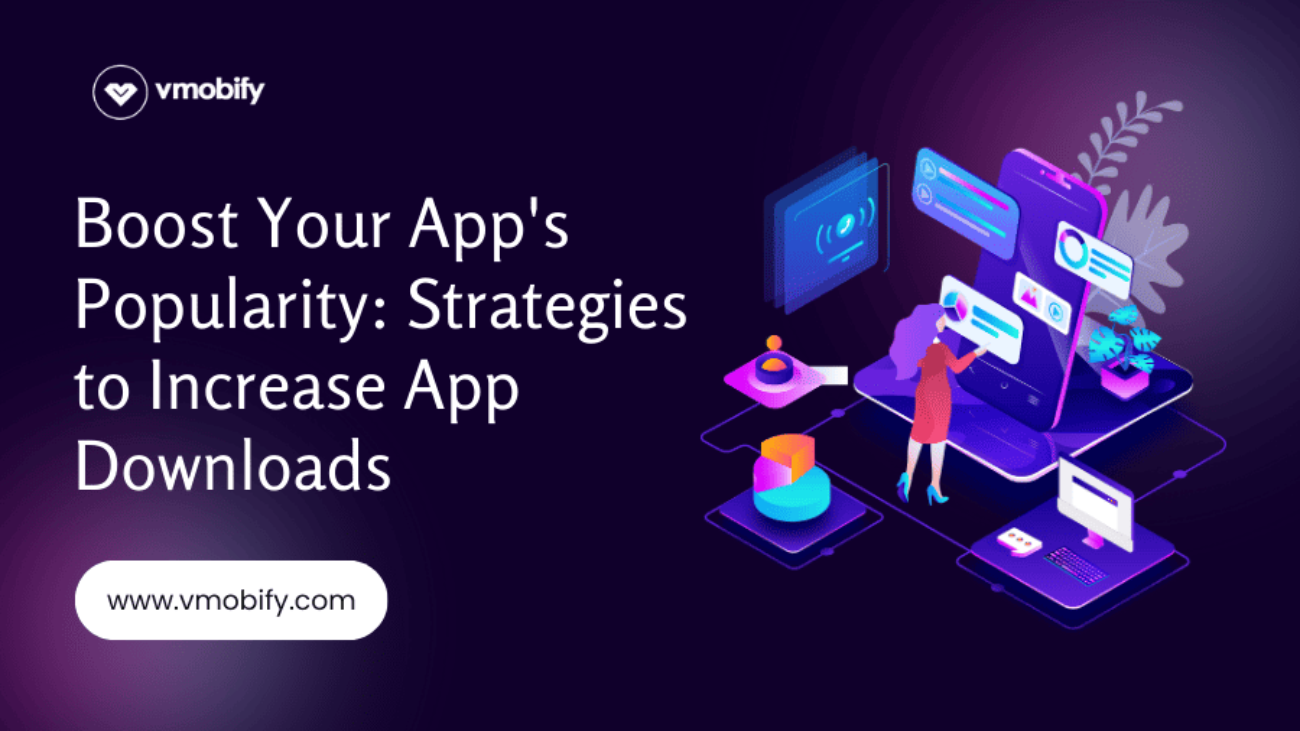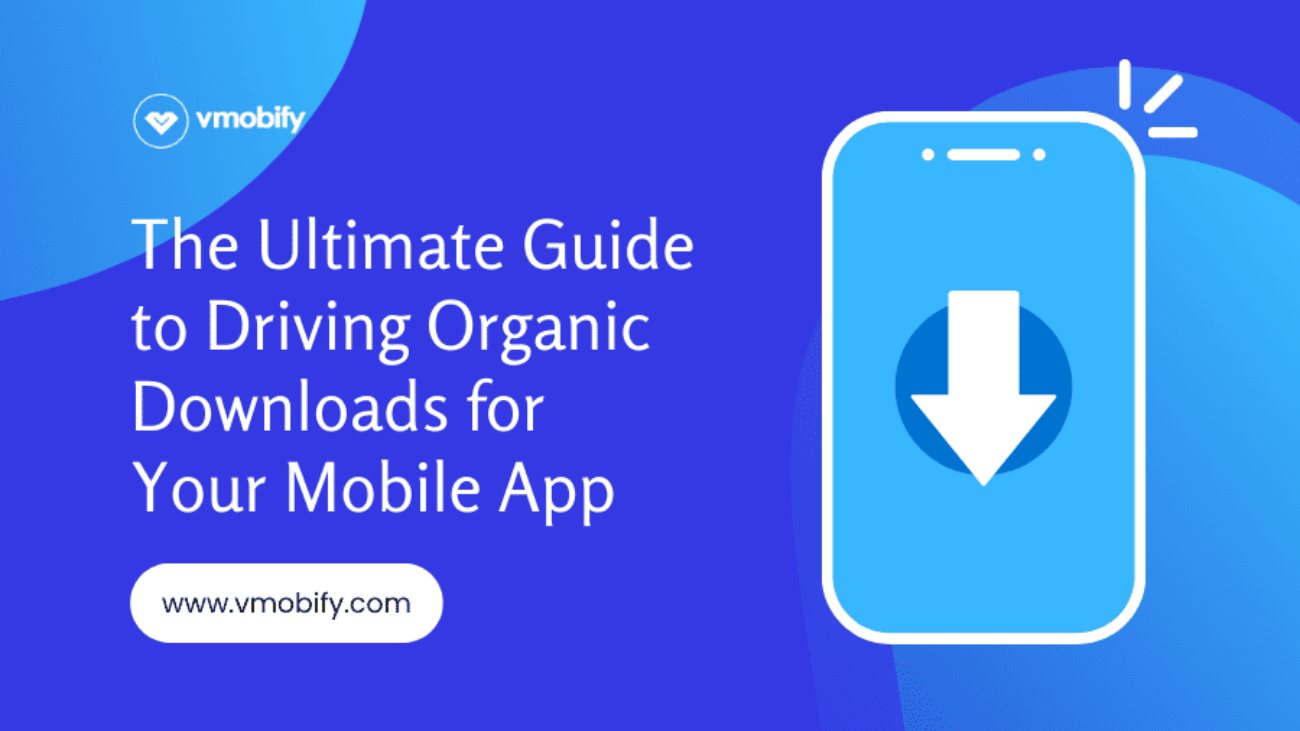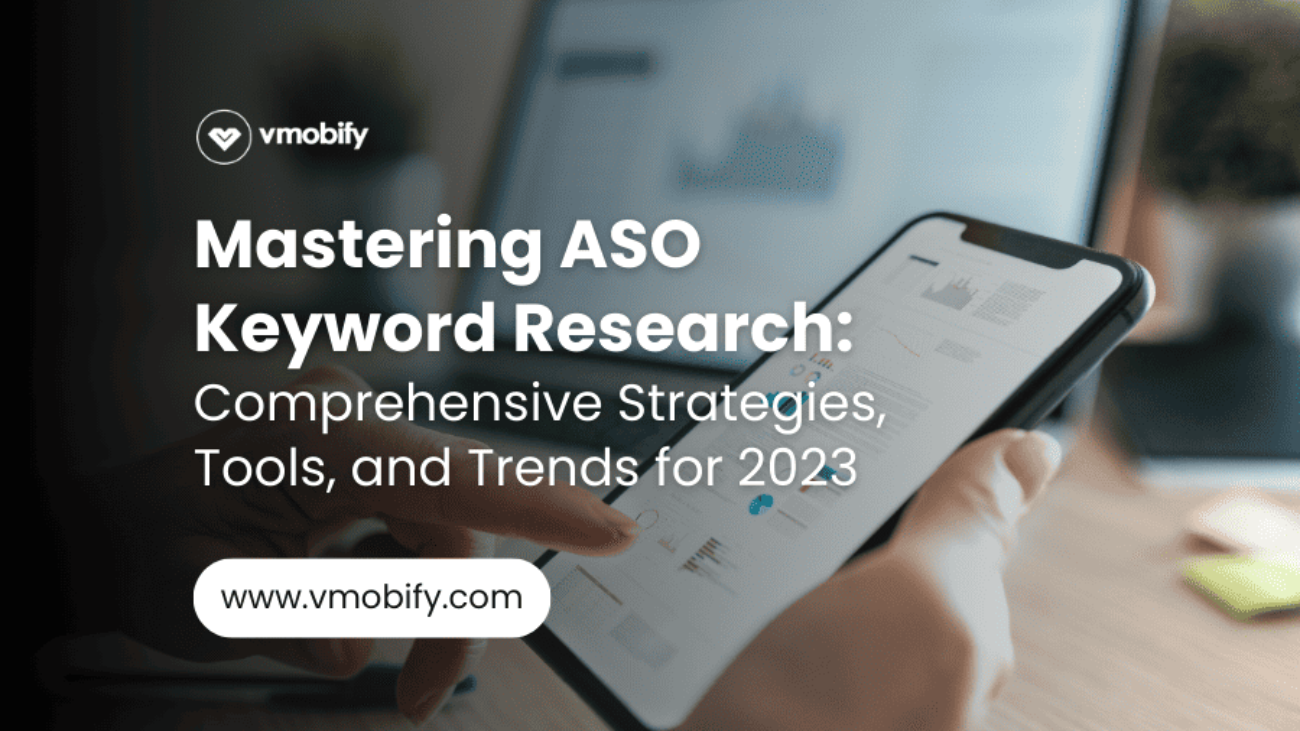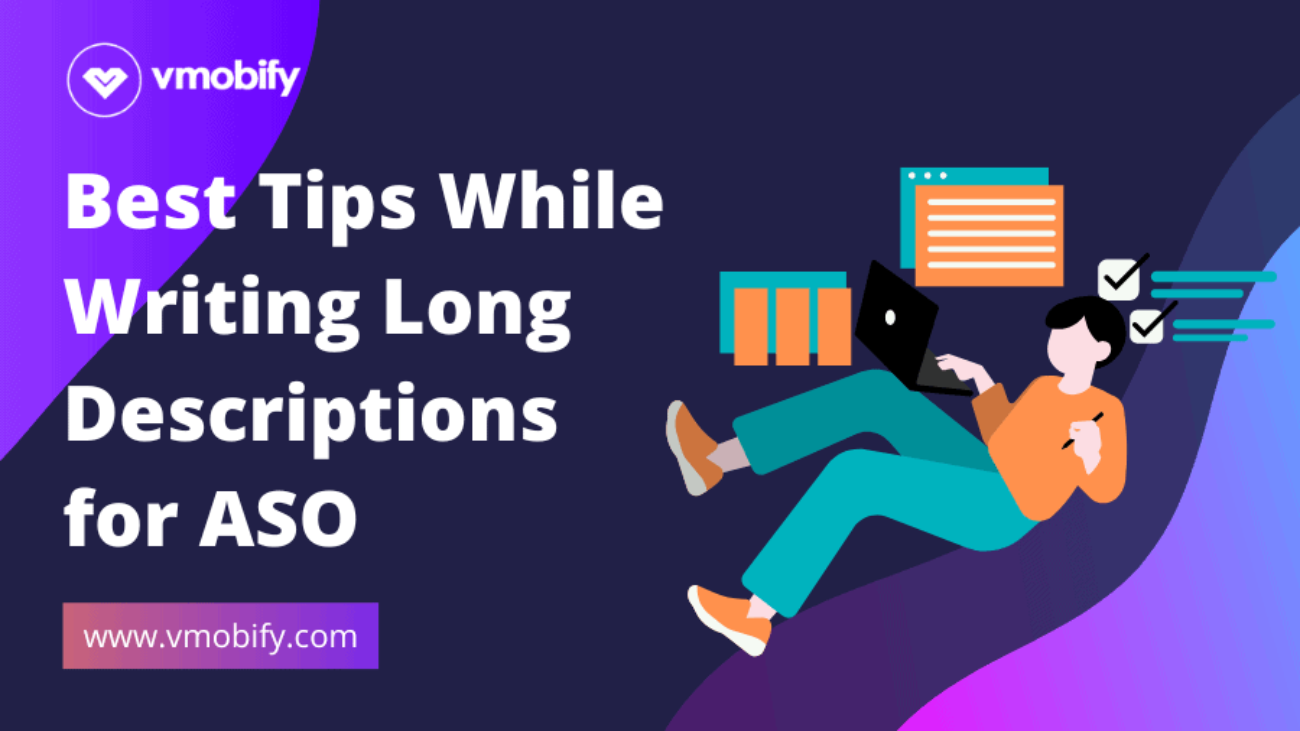In today’s fiercely competitive world of mobile apps, success isn’t just about developing a great app; it’s also about ensuring that your app reaches its intended audience and garners the attention it deserves. One of the ultimate goals for any app developer or marketer is to increase app downloads. After all, what’s the point of having an incredible app if no one is using it? To help you in this pursuit, we’ve compiled an in-depth guide featuring a variety of strategies that will not only boost your app’s popularity but also drive those download numbers through the roof.
1. Optimize Your App Store Listing (ASO)
The Power of ASO
App Store Optimization (ASO) is your secret weapon to improve your app’s visibility in app stores. It’s essentially the art of making your app more discoverable to potential users within the app stores. Your ASO efforts should begin with the following elements:
a. Title, Description, and Keywords
Start by optimizing your app’s title, description, and keywords. The title should be clear, concise, and relevant to your app’s purpose. The description should provide a comprehensive yet compelling overview of what your app offers. Incorporate relevant keywords naturally to increase the chances of your app showing up in search results.
Keyword optimization is a crucial aspect of ASO. Research relevant keywords that users might use to find apps like yours. Utilize tools such as Google Keyword Planner or specialized ASO tools to identify high-traffic keywords. Incorporate these keywords not only in your app’s title and description but also in the app’s metadata.
b. Icon and Screenshots
Your app’s icon and screenshots are the first visual impressions users will have of your app. Make sure they are eye-catching and effectively communicate what your app is about. Visual appeal can significantly influence users’ decisions to download your app.
Your app’s icon is akin to a logo, so invest time and effort in designing a memorable one. Use attractive and relevant images in your screenshots to showcase key features and benefits. Consider A/B testing different visuals to determine which ones resonate best with your target audience.
c. Ratings and Reviews
Positive ratings and reviews from satisfied users play a vital role in convincing others to download your app. Encourage users to leave reviews and respond to their feedback, whether it’s positive or negative. Addressing concerns and making improvements based on user feedback can lead to higher ratings.
Building a strong rapport with your users is essential. Encourage happy users to rate your app and leave reviews. Additionally, respond to user reviews professionally and promptly. Thank users for their feedback and address any issues they may have reported. Publicly resolving problems in reviews can demonstrate your commitment to customer satisfaction.
d. Localization
Consider localizing your app’s listing for different regions and languages. This can broaden your app’s appeal to a more diverse audience.
Localization goes beyond simple translation. It involves adapting your app’s content, features, and even design to cater to specific cultures and languages. Understanding the cultural nuances of your target markets is vital for successful localization. When users feel that your app is tailored to their needs and preferences, they are more likely to download and use it.
Vmobify’s ASO Services
For a more detailed and expert approach to ASO, you can leverage the services of professionals like Vmobify. Their ASO services are designed to help your app climb the ranks in app stores, ensuring that it stands out amidst the competition.
2. Create High-Quality App Content
The Importance of Quality Content
Beyond the technical aspects of your app’s listing, the content within your app is equally crucial. Your app’s content should be engaging, user-friendly, and free of bugs. Positive user experiences lead to favorable reviews and higher user retention rates.
a. User-Friendly Interface
Ensure that your app’s interface is intuitive and easy to navigate. Users should be able to achieve their goals within the app with minimal effort.
A user-friendly interface is often the key to retaining users. Conduct usability testing to identify pain points and improve the overall user experience. Simplify navigation, provide clear calls to action, and minimize steps required to complete tasks within the app.
b. Regular Updates
Continuously update your app to fix bugs and introduce new features. Regular updates demonstrate your commitment to providing a top-notch user experience.
Frequent updates are a sign that your app is actively maintained and improved. Listen to user feedback and prioritize bug fixes and feature requests. Release notes accompanying updates can inform users about the improvements, further enhancing their trust in your app.
c. Beta Testing
Consider conducting beta testing with a group of users before launching major updates. This can help identify and resolve issues before they reach a wider audience.
Beta testing allows you to gather valuable feedback from a smaller group of users who can uncover issues that might have been missed during internal testing. Engaging with beta testers also fosters a sense of community and can turn them into advocates for your app.
Vmobify’s Expertise in App Content
Vmotify specializes in optimizing app content and user experience. Their expertise can help you refine your app’s content, ensuring that it meets the highest standards of quality and user satisfaction.
3. Leverage Social Media Marketing
The Power of Social Media
In the digital age, social media has become an integral part of app marketing. Leveraging the reach and engagement potential of platforms like Facebook, Instagram, Twitter, and LinkedIn can be a game-changer for your app’s download numbers.
a. Create Engaging Content
On your social media profiles, share engaging content related to your app. This can include promotional posts, informative articles, user testimonials, and behind-the-scenes glimpses of your development process.
Creating engaging content is about storytelling. Craft narratives that resonate with your target audience. Share success stories of users who have benefited from your app. Use visuals, such as infographics and videos, to convey your message effectively.
b. Run Targeted Ads
Social media platforms offer powerful advertising tools that allow you to target specific demographics, interests, and behaviors. Running targeted ads can help you reach potential users who are more likely to be interested in your app.
Targeted ads on social media can be highly effective. Define your audience precisely, considering factors like age, gender, location, interests, and even their online behavior. Use A/B testing to fine-tune ad copy, visuals, and targeting for optimal results.
c. Engage with Your Audience
Don’t just use social media as a broadcasting platform; actively engage with your audience. Respond to comments, answer questions, and build a community around your app.
Engagement fosters a sense of belonging. Regularly check your social media accounts for comments, mentions, and direct messages. Respond promptly and thoughtfully. Encourage discussions and user-generated content. Build a loyal community around your app where users can share their experiences and help one another.
d. Encourage User-Generated Content
Encourage users to share their experiences with your app on social media. User-generated content can be a powerful form of marketing as it comes from authentic sources.
User-generated content adds credibility to your app. Create campaigns or contests that motivate users to create and share content related to your app. Showcase this content on your social media profiles and acknowledge and reward users for their contributions.
Vmobify’s Social Media Strategies
For expert guidance on social media marketing, consider consulting Vmobify. Their social media experts can help you create and execute a tailored social media strategy to increase app downloads.
4. Collaborate with Influencers
The Influence of Influencers
Influencer marketing has gained immense popularity in recent years. Partnering with influencers in your niche can give your app a significant boost. Influencers have a loyal following, and their endorsement can lead to a surge in downloads.
a. Identify Relevant Influencers
Identify influencers who align with your app’s target audience and values. The authenticity of the influencer’s connection with your app is crucial for a successful partnership.
Influencer identification is a meticulous process. Research influencers in your niche, considering factors such as follower count, engagement rate, and the alignment of their content with your app’s purpose. Focus on influencers who genuinely resonate with your app’s mission.
b. Reach Out and Collaborate
Approach influencers with a collaboration proposal. Be transparent about your expectations and offer something of value in return for their promotion of your app.
When reaching out to influencers, craft personalized messages that highlight the value your app brings to their followers. Explain why your app is a perfect fit for their audience and how the partnership can benefit both parties. Remember that influencers receive numerous collaboration requests, so make your proposition unique and appealing.
c. Measure Impact
Track the impact of influencer collaborations. Look at metrics such as downloads, user engagement, and social media mentions to evaluate the success of your campaigns.
Measuring the impact of influencer marketing requires setting clear KPIs (Key Performance Indicators). Track the growth in downloads and user engagement during and after influencer partnerships. Additionally, monitor social media mentions and hashtags associated with your app. Analyze whether the influencer’s endorsement resulted in a substantial boost in app visibility and interest.
Vmobify’s Influencer Marketing Services
Vmotify specializes in influencer marketing and can help you identify and collaborate with influencers who can effectively promote your app to their dedicated followers.
5. Offer Limited-Time Promotions
Creating a Sense of Urgency
Limited-time promotions and discounts can create a sense of urgency among potential users. When people believe they are getting a valuable deal, they are more likely to download your app.
a. Flash Sales
Occasionally run flash sales or limited-time offers within your app. Promote these sales on your app store listing and social media channels to maximize their visibility.
Flash sales are a tried-and-true method to entice users to download your app. These time-limited discounts create a fear of missing out (FOMO) and encourage immediate action. Use persuasive copy and visually appealing graphics to make these promotions irresistible.
b. Referral Rewards
Implement a referral program where existing users are rewarded for referring new users to your app. This can incentivize users to spread the word.
Referral programs can turn your existing user base into advocates. Offer enticing rewards, such as discounts, exclusive features, or even cash incentives, for successful referrals. Ensure that the referral process is user-friendly and transparent.
c. Seasonal Promotions
Tailor promotions to fit seasonal events or holidays. Seasonal promotions can tap into the festive spirit and drive downloads.
Seasonal promotions align your app with popular events and celebrations. Create themed promotions and marketing materials to capture the holiday spirit. Use social media and email marketing to announce these seasonal offers well in advance to build anticipation.
Vmobify’s Promotion Strategies
Vmotify can assist you in crafting effective promotional strategies that not only drive downloads but also maximize user engagement and retention.
6. App Store Advertising
Boosting Visibility with Paid Ads
Consider running paid advertisements within app stores. This can significantly increase your app’s visibility and attract users who are actively searching for similar apps.
a. Search Ads
Opt for search ads that appear when users search for keywords related to your app. These ads can lead to high-quality downloads.
Search ads are a direct way to target users who are actively looking for apps like yours. Invest in keyword research to identify the most relevant and high-converting keywords for your app. Craft compelling ad copy that highlights your app’s unique selling points.
b. Display Ads
Display ads can be shown on app store pages and can include eye-catching visuals and compelling ad copy.
Display ads allow you to showcase your app’s features and benefits visually. Create attention-grabbing graphics and concise ad copy that clearly communicate what sets your app apart from the competition.
c. Video Ads
Video ads can provide a more immersive experience, allowing potential users to see your app in action before downloading.
Video ads are particularly effective for demonstrating your app’s functionality. Create engaging and informative videos that showcase how your app solves specific user problems. Keep these videos concise and focused on the app’s key features.
Vmobify’s App Store Advertising Expertise
When it comes to managing and optimizing app store advertising campaigns, Vmobify has the expertise to ensure your ad spend delivers maximum results.
7. Engage with User Feedback
The Value of User Feedback
Listening to your users is an essential part of improving your app and driving downloads. User feedback, whether positive or negative, offers valuable insights.
a. Prompt Responses
Respond promptly to user reviews and feedback within app stores. Acknowledge their concerns and thank them for their suggestions.
Prompt responses to user feedback demonstrate your commitment to user satisfaction. Engage in a professional and constructive manner, addressing concerns and providing solutions. Publicly resolving issues in app store reviews can showcase your dedication to improving your app.
b. Bug Fixes and Updates
Regularly address and fix bugs reported by users. This shows that you are committed to providing a smooth user experience.
Addressing bugs promptly is crucial for retaining users. Prioritize fixing critical issues that hinder the app’s functionality. Clearly communicate bug fixes in release notes to assure users that their concerns are taken seriously.
c. Feature Requests
Pay attention to feature requests from users. Implementing popular requests can enhance your app’s appeal.
Feature requests from users can provide valuable insights into their needs and desires. Consider creating a roadmap for future app updates that includes features requested by your user base. Communicate your plans for implementing these features to keep users engaged and eager to see improvements.
Vmobify’s User Engagement Strategies
Vmotify can help you establish effective feedback loops with users and implement strategies to ensure their voices are heard and valued.
8. Analyze and Refine
Data-Driven Decision Making
Regularly monitoring app analytics is crucial to track user behavior and engagement. Use this data to make informed decisions and refine your marketing strategies.
a. User Acquisition Metrics
Monitor user acquisition metrics to understand how users discover and download your app.
User acquisition metrics provide insights into the effectiveness of your marketing efforts. Track the sources of your app downloads, such as organic search, paid advertising, or referral traffic. Use this information to allocate your marketing budget more effectively.
b. User Retention Metrics
Track user retention rates to gauge the effectiveness of your app’s content and user experience.
User retention is a key indicator of your app’s long-term success. Analyze user behavior to identify drop-off points and reasons for user churn. Make improvements to your app’s content and usability based on this data to increase user retention.
c. Conversion Metrics
Analyze conversion metrics to evaluate the performance of your marketing campaigns and strategies.
Conversion metrics, such as click-through rates (CTR) and conversion rates, help you assess the efficiency of your marketing efforts. Continuously A/B test different marketing messages, visuals, and calls to action to optimize conversion rates. Focus on refining your strategies based on data-driven insights.
Vmobify’s Performance Marketing Services
Vmotify specializes in analyzing and optimizing your app’s performance. Their expertise in performance marketing can help you make data-driven decisions to increase app downloads.
Conclusion
Increasing app downloads is a multifaceted endeavor that requires a combination of smart marketing, optimization, and user engagement. By implementing the strategies mentioned above and leveraging the expertise of professionals like Vmobify, you can not only boost your app’s popularity but also achieve your download goals.
Remember that it’s not just about the number of downloads; it’s about delivering value to your users and building a loyal user base. With the right strategies and a commitment to excellence, your app can thrive in today’s competitive app landscape. Happy downloading!
This comprehensive guide is your roadmap to boosting app downloads and achieving success in the competitive world of mobile apps. Implement these strategies with care, continuously analyze your app’s performance, and watch your download numbers soar. If you have any further questions or need additional insights, feel free to reach out. Good luck with your app marketing journey





